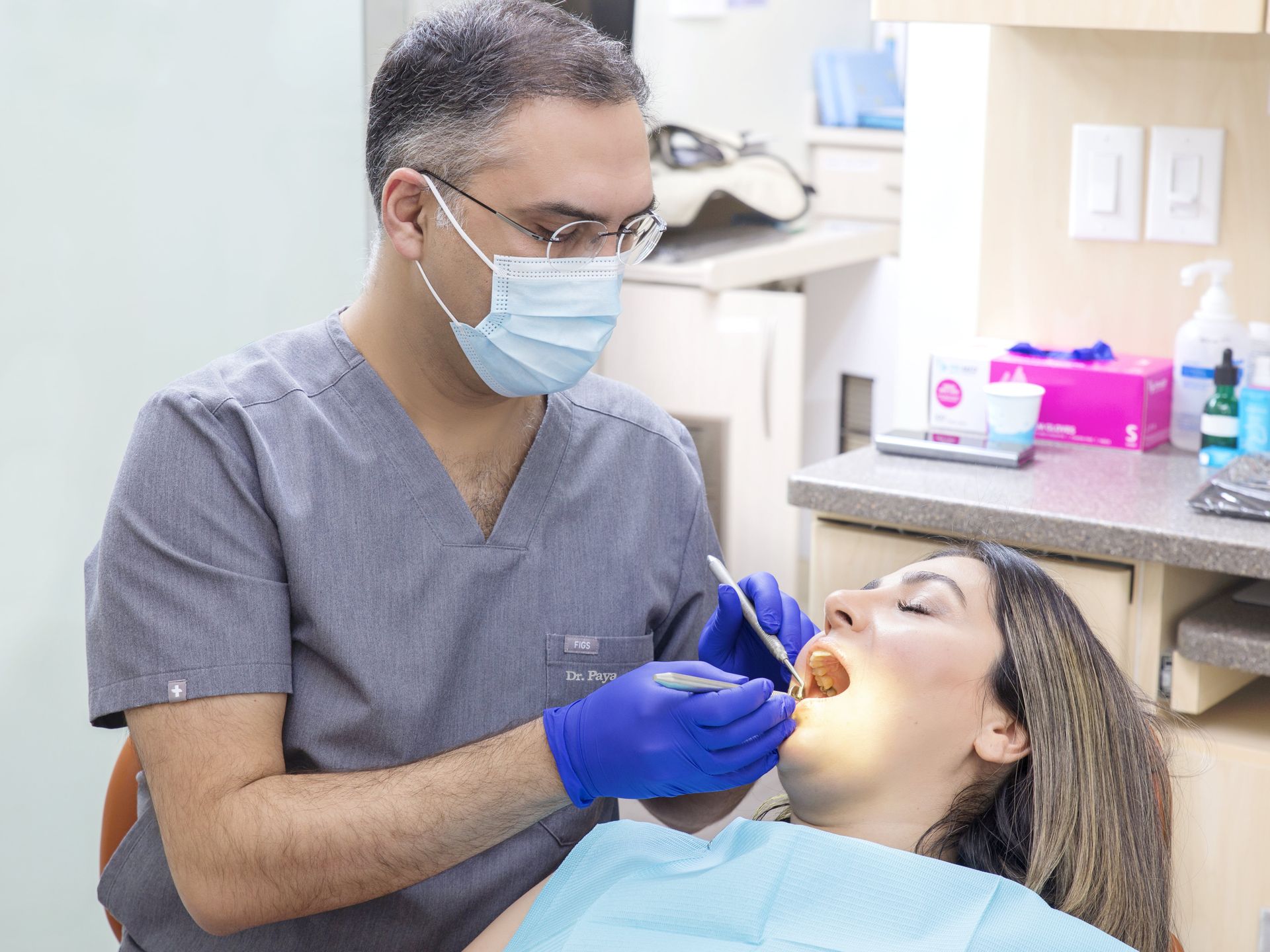Dental Bone Grafting
Complicated Dental Surgeries and Bone Grafting in Markham
When a tooth is lost, the bone around it shrinks – which is a natural physiological response from our body. Over a period of time, the jawbone associated with missing teeth atrophies or is absorbed. This often leaves a condition in which there is poor quality and quantity of bone suitable for placement of dental implants. In these situations, most patients are not candidates for placement of dental implants.
With over 15 years of clinical, hands-on experience in advanced fields of modern dentistry, Dr. Ouyar Hossein is able to offer you bone grafting solutions to help with placing implants of proper length and width. That allows to restore the functionality of teeth and appearance.


What
is Bone Grafting?
If your jaw bone is too thin or soft to keep a dental implant in place, there is an extremely good chance the implant will fail. In a bone graft procedure, a section of bone from another area of your body is taken or as is a common procedure now, a special bone grafting material is used, and grafted onto your jaw bone.
The
recovery time is usually several
months while the graft creates
enough new, strong bone to ensure
the implant will be stable and
secure. It is possible to perform
the bone graft and implant surgery
at the same time. A successful bone
graft will allow your jaw bone to be
strong enough to support your dental
implant.
Bone
Grafting Jaw Bone
Prevention
If
you’ve had one tooth or
several teeth missing for a long
time, there’s a chance that
the bone, below where those teeth
would have been, have now become
broken down. A breakdown in bone
structure can also be caused
by:
- Infection
- Facial trauma
- Growth deformity
- Periodontal disease
- Untreated
cavities
In
addition, when teeth are extracted,
the surrounding bone and gums can
shrink and recede very quickly after
the extraction resulting in defects
and collapse of your lips and
cheeks. These jaw defects can create
major problems in performing future
restorative dentistry whether your
treatment involves dental implants,
bridges or dentures. Jaw deformities
from tooth removal can be prevented
and repaired by a procedure called
socket preservation. Socket
preservation can greatly improve
your smile’s appearance and
increase your chances for
successful
dental
implants
for
years to come. Depending on his
patient’s unique situation,
Dr. Ouyar Hossein has been using
various techniques to preserve bone
and minimize bone loss after an
extraction. In one common method,
the tooth is removed and the socket
is filled with bone or bone
substitute. It is then covered with
gum, artificial membrane, or
tissue-stimulating proteins to
encourage the body’s natural
ability to repair the socket. With
this method, the socket heals with
minimum shrinkage and collapse of
surrounding gum and facial tissues.
The newly formed bone in the socket
also provides a foundation for an
implant to replace the
tooth.
Your Smile is Our Success
Office Info
Tel: (905) 472-2345
Fax: (905) 472-2399
Email:
info@eastvaledentistry.ca
Address: 7 Eastvale Dr., Unit 6
Markham, ON, L3S 4N8
Business Hours
- Monday
- -
- Tuesday
- -
- Wednesday
- -
- Thursday
- -
- Friday
- -
- Saturday
- -
- Sunday
- Closed
Copyright © 2023 Eastvale Dentistry. All Rights Reserved. Privacy Policy.
